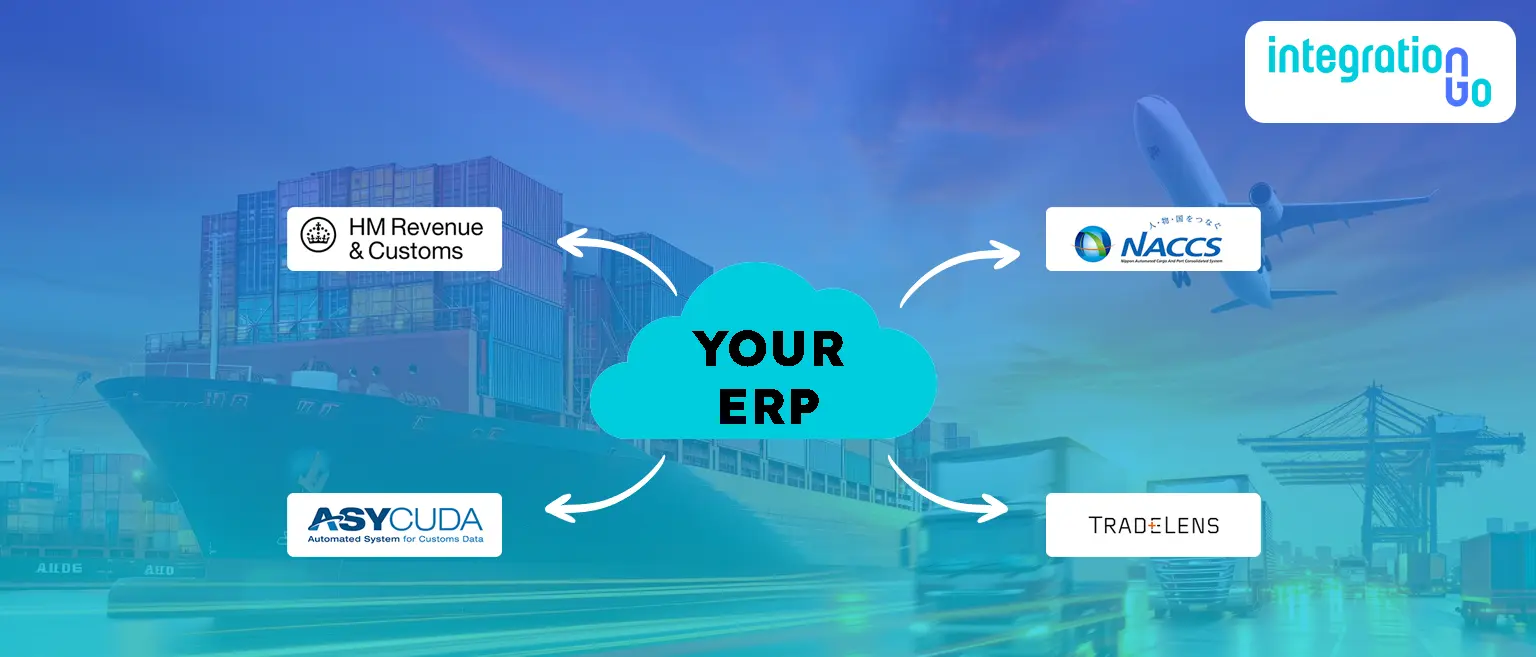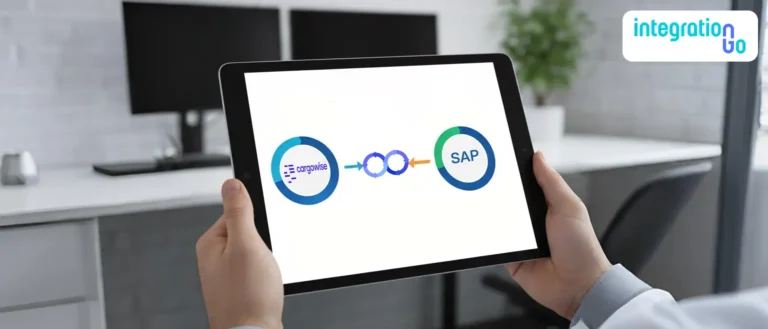Even in an automated world, most logistics teams still manage customs filings manually, using spreadsheets, portals, and constant retyping. Each delay or manual error spreads across the supply chain, increasing tariffs, reducing clearing, and pushing invoicing further out.
When your ERP and customs systems don’t integrate, it’s like running your supply chain on two different clocks, one for shipments and another for compliance. Integration brings them into a single rhythm, ensuring faster clearance, accurate documentation, and smoother trade flows.
That’s why forward-thinking freight forwarders, customs brokers, and logistics service providers are now integrating CargoWise, SAP, Oracle, or Infor with global customs systems like ASYCUDA, AMS, and ICS2, creating a live, compliant, and fully traceable trade environment.
What Happens When Systems are Disconnected?
Disconnected systems create visibility gaps at the worst possible times. Teams end up manually uploading declarations, cross-checking HS codes, and tracking approvals through endless email chains. Shipments sit idle at ports while finance waits for clearance data to generate invoices.
In many operations, finance teams spend 20–30 hours per week reconciling shipment costs and duties between systems. A 24-hour customs delay can lead to missed delivery SLAs and lost client confidence. The ripple effects? Slower billing, weaker cash flow, and mounting compliance risks.
Without unified visibility, your operations, finance, and compliance teams are never truly aligned, and that’s where profit quietly leaks away.
Why Integrate Your ERP with Customs Systems?
Integration eliminates the lag between cargo movement and financial recognition. By integrating your ERP, such as CargoWise or SAP, directly with customs systems, every declaration, duty, and tariff update is automatically pushed through secure data pipelines.
This means:
No double data entry - Shipment details, HS codes, and values sync automatically.
Instant customs submissions - Filings are transmitted directly from your ERP.
Accurate duty and tax mapping - Real-time validation ensures compliance with global standards.
Integration replaces slow, manual compliance with automated precision, giving logistics businesses full control over customs operations while improving cash flow and trade efficiency.
How does Integration Accelerate Trade and Profitability?
When customs workflows are integrated into your ERP, the entire trade cycle moves faster.
Faster Clearance: Automatic submission and validation reduce border delays by up to 68%.
Real-Time Visibility: Customs status updates flow back into the ERP, enabling proactive communication with clients.
Faster Billing: Clearance data triggers automatic invoicing, shortening the order-to-cash cycle.
Fewer Penalties: Automated duty calculation and tariff validation prevent costly compliance errors.
In short, integrated systems turn customs from an obstacle into a profit engine, improving turnaround time, accuracy, and control.
How Logistics Challenges are Solved by Customs Integration?
Customs integration resolves some of the industry’s most persistent obstacles:
Declaration Rejections: Automated validation ensures every submission meets regulatory requirements.
Data Duplication: A single source of truth between the ERP and customs eliminates mismatches.
Multi-Country Compliance: Support for AMS, ISF, and ASYCUDA ensures global readiness.
- Visibility Gaps: Teams can monitor every declaration, duty payment, and clearance milestone in real time.
- Audit Readiness: Every filing and status is stored automatically, simplifying post-shipment audits.
This is how logistics teams shift from reactive problem-solving to proactive trade management.
What Results Can You Expect After Integration?
After integration, customs clearance times shrink from 2–3 days to less than 12 hours, while filing errors drop from 15% to under 2%. The order-to-cash cycle accelerates from a week to just 3–4 days, giving finance teams faster visibility into receivables. Compliance exceptions are reduced by nearly 90%, and manual data handling falls by 60%, freeing your team to focus on cost control and client service instead of paperwork.
For freight forwarders and brokers, this means quicker duty reconciliation, real-time customs status tracking, and smoother coordination between operations and finance. The result? Faster billing, cleaner audits, and stronger profitability across every trade lane.
Why Choose IntegrationGo for ERP to Customs Systems Integration?
IntegrationGo connects CargoWise, SAP, Oracle, Magaya, and other leading ERPs with customs systems integration to enable smooth, compliant, and secure data exchange.
Here’s what sets us apart:
End-to-End Integration Service: From requirement analysis to go-live and monitoring.
Secure Middleware: Real-time data sync through cloud infrastructure.
Custom Duty Mapping: Intelligent validation ensures accuracy across HS codes and VAT rates.
Multi-Country Support: AMS, ISF, and ASYCUDA-ready integrations for global logistics operations.
24/7 Monitoring: Continuous oversight ensures your trade data flows without interruption.
With IntegrationGo, your ERP becomes a true global trade engine, handling customs, finance, and compliance in one ecosystem.
Conclusion:
In logistics, time equals revenue, and every hour lost at customs eats into your margins. With ERP–customs integration, you gain faster clearance, fewer errors, and a direct path to higher profitability.
IntegrationGo helps you align your customs, finance, and operations teams through real-time data exchange and automated compliance. It’s not just integration, it’s optimization for your entire supply chain. Let’s book a free consultation today and discover how IntegrationGo can help you automate customs, accelerate trade, and increase your global profitability shipment by shipment.



